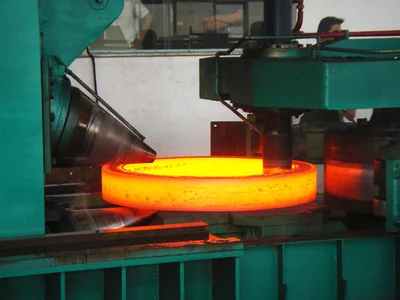Production
Titanium production involves several steps, including:
- Mining: Titanium is primarily found in the minerals ilmenite and rutile, which are extracted from open-pit mines.
- Converting the ilmenite and rutile to titanium dioxide: This is typically done through a process called the Chloride Ilmenite Process, which involves treating the minerals with chlorine gas to produce titanium tetrachloride.
- Reducing the titanium tetrachloride to titanium: This is typically done through a process called the Kroll process, which involves reducing the titanium tetrachloride with magnesium metal to produce titanium and magnesium chloride.
- Purifying and alloying the titanium: The purified titanium is then alloyed with other metals, such as aluminum and vanadium, to produce the desired properties.
- Fabricating the titanium: The alloyed titanium is then fabricated into the desired final product, such as titanium sheets or titanium parts for use in aircraft, medical implants, and other applications.
Titanium Sponge
Titanium sponge is a porous form of titanium metal that is typically produced through the reduction of titanium tetrachloride. It is not found naturally, but is made through a process.
The raw material for producing titanium tetrachloride is the mineral ilmenite and rutile, which are typically found in beach sands, and also in hard-rock deposits. Ilmenite and rutile deposits are found in many countries around the world, including Australia, Canada, China, India, South Africa, and the United States.
Once titanium tetrachloride is produced, it is then reduced to produce titanium sponge through the Kroll process. This process is done in specialized plants and found around the world.
Titanium Pricing
The price of titanium is determined by a number of factors, including:
- Supply and demand: As with any commodity, the price of titanium is influenced by the balance between supply and demand. Factors that can affect demand include the growth of industries that use titanium, such as aerospace and medical, as well as trends in consumer demand for titanium products.
- Production costs: The cost of mining and processing the raw materials to produce titanium can affect the price of the metal.
- Currency exchange rates: The price of titanium is often quoted in US dollars, so fluctuations in the value of the dollar can affect the price of the metal.
- Competition from other metals: The price of titanium may be influenced by competition from other metals, such as aluminum and steel, which can be used as substitutes in some applications.
- Stockpiles: The amount of titanium that is held in stockpiles can also affect the price.
- Prices for titanium can vary depending on the form and the grade and quality of the titanium. Generally, the prices are determined by supply and demand, and also by the cost of production. Prices can fluctuate depending on market conditions, and are usually quoted as a range, rather than a fixed price.
Uses
Titanium is widely used in various industries due to its excellent strength-to-weight ratio, corrosion resistance, and biocompatibility. Some of the main uses for titanium include:
- Aerospace: Titanium is used in the construction of aircraft and spacecraft because it is lightweight, strong, and resistant to corrosion.
- Medical: Titanium is used in surgical implants such as joint replacements, dental implants, and pacemakers due to its biocompatibility.
- Automotive: Titanium is used in the automotive industry for components such as exhaust systems, suspension systems, and engine components because of its strength and resistance to heat.
- Marine: Titanium is used in marine applications such as shipbuilding and in the construction of desalination plants because of its resistance to corrosion.
- Chemical processing: Titanium is used in the chemical processing industry for equipment such as heat exchangers, pumps, and valves because of its resistance to corrosion.
- Sports equipment: Titanium is used in the manufacture of sporting goods such as golf clubs, tennis rackets, and bicycles because of its strength and lightweight properties.
